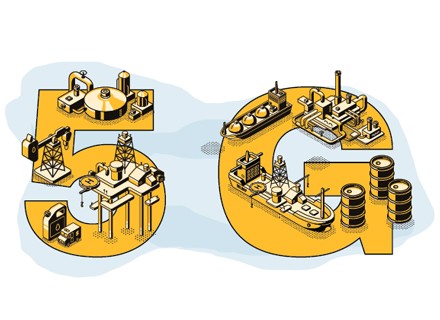Globally, oil and gas industries have continued to grow, no matter what the economy is like. According to experts, the oil and gas industry is expected to grow at an average rate of 1.6 percent every year, till 2024. It has also been predicted that the oil and gas sector will emerge as a frontrunner in terms of migration too.
Since it is a highly diversified field that deals with complex operations, processes, and infrastructure, it looks like the oil and natural gas industry is the desired leader when it comes to industry transformation. Coming to demand, as far as oil is concerned, the primary supply will keep coming from the transportation industry. Going by the global market trends, there is growth noticed in offshore platforms in the deep sea. The remote platforms of the oil and gas industry, harsh sea conditions, strong and unpredictable winds, water, extreme temperatures, and distance from the shore are some of the challenges that will definitely be addressed with a stronger communication system.
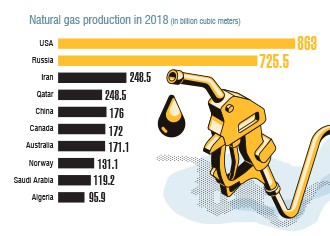 There are a lot of oil and gas platforms that depend on the connection with satellite links. Not only are these expensive, but it is also difficult to implement them in such remote and harsh locations. Each surrounding vessel requires a link that needs to establish a connection between the vessel and the offshore platform and the estimated cost to do so could cross $200,000 annually, which is not a small sum. Additionally, it only provides voice communications within a restricted range of a few miles, and that too, not in real-time. If communication tech is developed, the options for offshore communications will evolve too. 5G is one of the leading technologies that is bound to make significant changes to oil and gas companies by providing lightning speed and low latency communication between drilling sites, vessels, and offshore platforms.
There are a lot of oil and gas platforms that depend on the connection with satellite links. Not only are these expensive, but it is also difficult to implement them in such remote and harsh locations. Each surrounding vessel requires a link that needs to establish a connection between the vessel and the offshore platform and the estimated cost to do so could cross $200,000 annually, which is not a small sum. Additionally, it only provides voice communications within a restricted range of a few miles, and that too, not in real-time. If communication tech is developed, the options for offshore communications will evolve too. 5G is one of the leading technologies that is bound to make significant changes to oil and gas companies by providing lightning speed and low latency communication between drilling sites, vessels, and offshore platforms.
How 5G can change the oil and gas industry?
As the sector grows annually, it has been noticed that the need for efficiency and agility in oil exploration and production is ever-increasing, which, in turn, is driving the need for digital initiatives. Due to the pandemic, the oil industry has found itself in a precarious position by seeing lesser demands and lowered prices. However, at the same time, the pandemic has also created a great opportunity for the sector to modernise their infrastructure and build more efficient operations.
And this is where 5G can swoop in and change the game. According to Frost and Sullivan, 5G is a critical component for the digital transformation of the industry. For instance, the oil and gas industry has struggled historically with seismic data collection, and doing it the right way took a lot of time and manual labour. With 5G in place, these problems will have an easy solution.
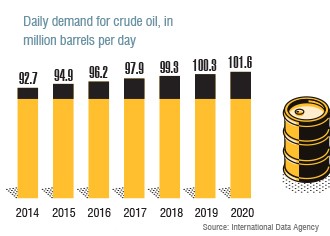 For example, Huawei recently helped one of its oil and gas clients install a 5G network that provided high bandwidth, better connectivity, and low latency, which helped them streamline their data collection process. As a result, the oil and gas company was able to avail of lightning-fast seismic data retrieval and was able to reduce manual labor to collect the data.
For example, Huawei recently helped one of its oil and gas clients install a 5G network that provided high bandwidth, better connectivity, and low latency, which helped them streamline their data collection process. As a result, the oil and gas company was able to avail of lightning-fast seismic data retrieval and was able to reduce manual labor to collect the data.
While the 5G network is unbelievably fast, it does a lot more than that. The network can be used as a stepping stone for any oil and gas company tech infrastructure, including cloud computing, big data analytics, robot and drone inspection, and augmented and virtual reality. Additionally, it can also be used for Industrial Internet of Things (IIoT) and artificial intelligence use cases. Evidently, 5G has an amazing untapped potential that could completely revolutionise the oil and gas sector, thereby enabling industry players to optimise their performance and get in position until the demand gets back its natural stature.
5G has the potential to remotely manage unmanned oil production platforms
Given the already much-hyped benefits of the network, the management of unmanned production platforms is a fairly realistic possibility. But this cannot be achieved with 4G/LTE networks. It is absolutely imperative for the oil and gas sector to have reliable, secure, and resilient networks that provide a seamless network for easy connectivity which is essential for their daily operations. The latest projects are developed on highly efficient computing platforms which require high bandwidth to deliver sensitive information to the control center.
Ever since the inception of these projects, network developers have tried evolving in order to deliver cost-effective technologies without compromising on network performance and reliability. Multiprotocol Label Switching (MPLS), along with Virtual Private Network (VPNs) have been successfully fulfilling these requirements by converging applications.
Additionally, LAN-based Ethernet, WiFi, and LTE technologies are now being used to their full potential and are providing a starting point for increasing demand and transformative automation using 5G networks. With the help of 5G network, enterprises’ private and exclusive networks can now be configured in a much more efficient manner to meet the performance requirements. Additionally, the network slicing feature of 5G alone is expected to further strengthen the network performance requirements along with data privacy, real-time control, massive connectivity, and high bandwidth needs.
The 5G technology has gone live at a time when the oil and gas industry is going through some major transformations. Looking from an automation perspective, many industrial processes are already automated, and the oil and gas industry continues to strive for better efficiency and production speed by leveraging existing and new-age communication networks like 5G.
5G doesn’t define the industrial process, instead, it acts as an enabler of new use cases and operating models. To begin with, 5G networks offer immense opportunity to replicate the confusing and wired system of various controllers, switches, sensors, and actuators. With a wider 5G adoption, there will be several opportunities to integrate it as an integral part of the evolution of industrial automation as production lines, machines, and processes are improved and redesigned. One of the immediate opportunities to leverage is the use of 5G that will replace the traditional LAN connections. While it can be argued that LTE and WiFi are capable of doing the same, it doesn’t support layer 1-2 performance which is absolutely essential for high bandwidth-intensive applications. Therefore, 5G can be used to meet these critical requirements.
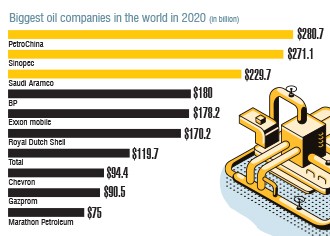 Additionally, it has been observed that there has been an increased interest in oil and gas companies in IIoT, and this comes with its own set of complexities. The IIoT companies require extreme mobile broadband, ultra-reliable low latency, massive IoT systems. Now the devices in oil and gas enterprises, i.e. sensors, automated guided vehicles, untethered AR / VR, security cameras, robotic controls generate a very different set of requirements throughput, mobility, latency, density, availability, and power. LTE and WiFi can meet some of these requirements, but there are some that fall under the category of URLLC (ultra-reliable low latency communication) and they can be only addressed with the help of a 5G network.
Additionally, it has been observed that there has been an increased interest in oil and gas companies in IIoT, and this comes with its own set of complexities. The IIoT companies require extreme mobile broadband, ultra-reliable low latency, massive IoT systems. Now the devices in oil and gas enterprises, i.e. sensors, automated guided vehicles, untethered AR / VR, security cameras, robotic controls generate a very different set of requirements throughput, mobility, latency, density, availability, and power. LTE and WiFi can meet some of these requirements, but there are some that fall under the category of URLLC (ultra-reliable low latency communication) and they can be only addressed with the help of a 5G network.
The 5G network comes with an entire range of uses in the oil and gas industry, and we are still discovering its potential in terms of use cases. Having said that, oil and gas industries could definitely benefit from what is being done by their peers in the global market and use it to replicate those wherever possible.
Implementing 5G in the industry
Another important factor to keep in mind here is how efficiently telecom industries can deliver public 5G services at remote locations. The network also provides provisions for organisations such as oil and gas companies or oil field service companies where they help them set up private 5G to help them solve their network and connectivity challenges faced by the remote assets. These companies also have the option to sell their 5G network services to other organisations.
Tech and telecommunications company Infrastructure Networks (INET) recently announced that they have completed a major expansion of Infrastructure Networks, which has led to the additional capacity of their private networks. It also helped them double their geographical coverage and to make their network ready for 5G. At present, it covers 130,000 miles across four major energy basins like Permian/Delaware in West Texas and Southeast New Mexico; Eagle Ford in South Texas; Scoop/Stack in Oklahoma; and Bakken in North Dakota.
The company also partnered with Nokia to expand and upgrade by taking the help of Nokia’s airscale RAN (radio access network). INET’s LTE network is well-positioned to meet the critical needs of the industrial sector that includes drilling, production, and midstream operations.
Additionally, the company also has partners that specialise in advanced analytics providers, thereby letting them to scale their innovative technology much faster. Operators, drillers and oilfield service companies can now get in tune with automation, artificial intelligence analytics and machine learning.
Providing video surveillance and analytics with 5G
Everyone with the slightest idea of how the oil and gas industry works will know that security is of utmost importance. Wireless video surveillance is one of the most effective ways to ensure the area and the drilling platform are safe and secure. Market experts estimate that the global video surveillance market will cross $60 billion by the end of 2025. With the help of wireless broadband, mounting cameras on drones, land vehicles, and in places that are difficult to reach through fixed cables are being made possible. These cameras can be used to deliver footage that can drive critical awareness and decision-making for a wide range of situations.
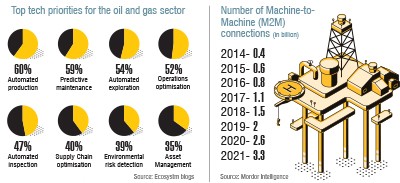 For example, drone-mounted cameras can help address seismic changes, fires, and natural disasters more accurately. Additionally, with its help, terminal operators could inspect container ships to make sure it’s safe even before they reach the port. Video analytics can also act as an important contributor to enhance the quality, security, and efficiency by letting the users know about intrusion detection, automatic fault detection, and control of robots. Similarly, it can also be used for search and rescue operations and to survey remote areas without the need for human interference. It is common knowledge that wireless video surveillance takes up a lot of bandwidth capacity, and the oil and natural gas enterprises would definitely need the help of 5G to deploy high-resolution and high-density cameras. The companies would also need 5G to combine 4K cameras with video analytics and support precise operations.
For example, drone-mounted cameras can help address seismic changes, fires, and natural disasters more accurately. Additionally, with its help, terminal operators could inspect container ships to make sure it’s safe even before they reach the port. Video analytics can also act as an important contributor to enhance the quality, security, and efficiency by letting the users know about intrusion detection, automatic fault detection, and control of robots. Similarly, it can also be used for search and rescue operations and to survey remote areas without the need for human interference. It is common knowledge that wireless video surveillance takes up a lot of bandwidth capacity, and the oil and natural gas enterprises would definitely need the help of 5G to deploy high-resolution and high-density cameras. The companies would also need 5G to combine 4K cameras with video analytics and support precise operations.
5G challenges for the oil and gas industry
While implementing 5G, the first barrier that might be faced will be the cost expectation and perceptions with the technology.
The next challenge would be the 5G rollout and availability. Since 5G is not available everywhere and it is even less available outside of urban areas, where many oil and gas companies operate. 5G is still emerging in different parts of the world in different times. There are a number of different spectrum frequencies with different licensing and usage schemes that will be eventually addressed by all chipsets, but the industry is not there yet. This, in turn, creates a challenging atmosphere for global oil and gas operators who would need to think about different chipsets for their drills and other equipment in various parts of the world.
Then there is also the ever-looming threat of security. If 5G is implemented in the oil and gas industry, the number of devices will be increasing from 10 to 100 times per person, which will lead to more vulnerabilities. And lastly, when it comes to local gas stations, they are often independently owned and have their own technology solutions that will need to seamlessly blend together.
5G has the potential to drive digitalisation
Keeping aside a few cases, the application of 5G in this sector has primarily been a hit and miss. While the oil and gas industry has experimented with some of the use cases, but only a handful of the operators have managed to bring the network to a scale where it meets the limits of existing connectivity. However, we expect things to change as 5G has the potential to drive digitalisation of the oil and gas industry.
Throughout the years, the oil and gas industry has continued to transform itself amid extensive challenges. Apart from the smooth execution of operations, there is also a massive opportunity for the sector to transform its communication and application in order to enjoy the full benefits of the 5G network. Experts say that oil and gas enterprises should expand their network to new oil fields. Having said that, it is important for the oil and gas sector to innovate at a faster pace and implement this technology in new and existing oil fields.
While the introduction of 5G communication brings a whole new prospect for business within the oil and gas sector, it is important to keep in mind that the process to adopt this technology shouldn’t be rushed. As experts have suggested, businesses should assess all the benefits and the risks when they decide to integrate 5G communications in their projects. This can be done by consulting closely with the company’s IT team or they can also choose to bring in external IT experts and security professionals to ensure the safest adoption of 5G technologies within their own operations.


